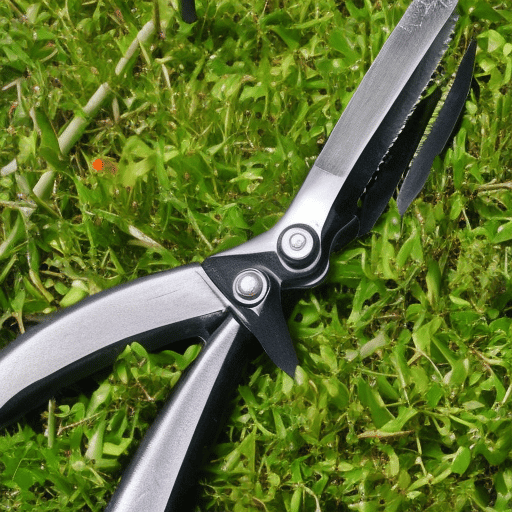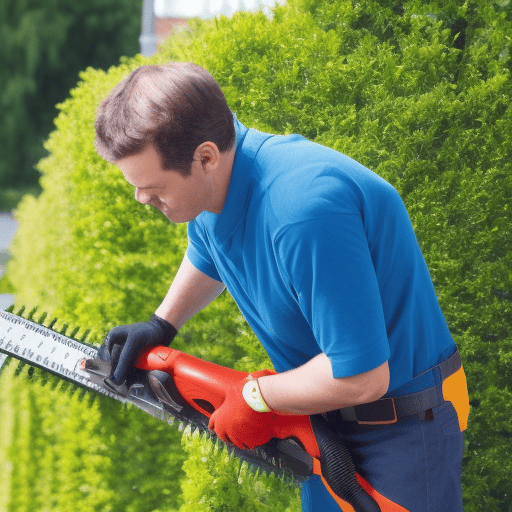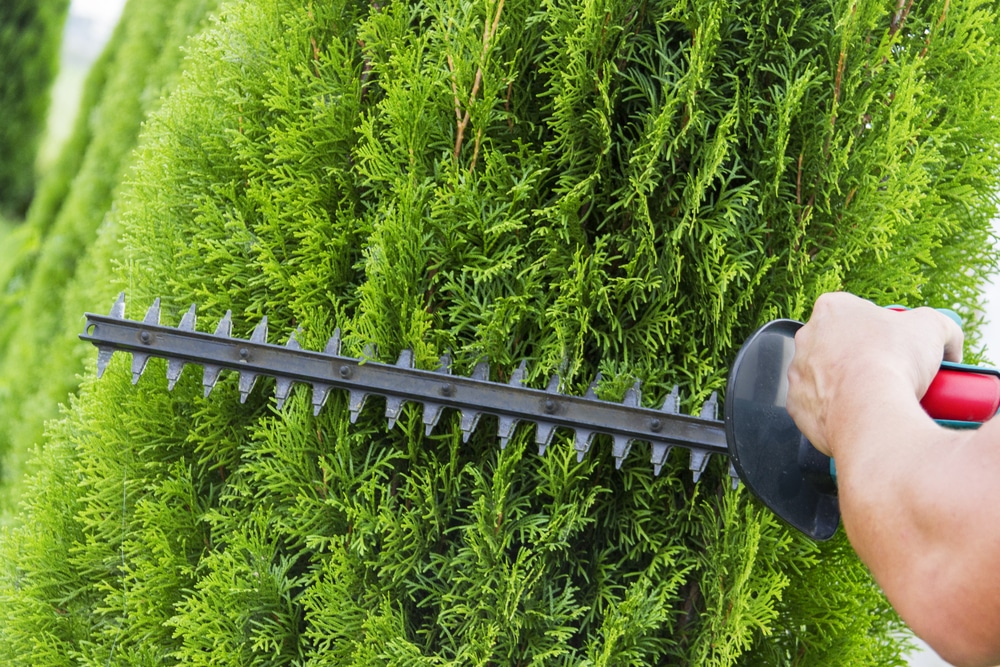Last Updated on
Are you looking to spruce up your garden? Do you know what the difference is between a hedge trimmer and a hedge cutter? If not, then don’t worry. In this blog post we’ll explore all there is to know about both tools. From understanding their purpose, figuring out which one works best for your needs, as well as tips on how to use them safely – by the end of it all, you will be an expert in knowing exactly what’s the difference between a hedge trimmer and a hedge cutter. So let’s get started.
Table of Contents:
- Hedge Trimmers: What You Need to Know
- Hedge Cutters: The Basics
- Which Tool Is Right for You?
- Tips for Safe Hedge Trimming and Cutting
- FAQs in Relation to What’s the Difference Between a Hedge Trimmer and a Hedge Cutter
- Conclusion
Hedge Trimmers: What You Need to Know
A hedge trimmer is a tool used to trim and shape hedges, shrubs, and other plants. It consists of two blades that move in opposite directions to cut through branches quickly and easily. Hedge trimmers come in different sizes and styles, from small handheld models to larger electric or gas-powered versions.
The benefits of using a hedge trimmer are numerous. For starters, it can save you time when trimming your hedges as it cuts through branches faster than manual pruning shears or scissors. Additionally, the even cutting action ensures that all sides of the hedge are trimmed evenly for an aesthetically pleasing look. Furthermore, some models feature adjustable blades so you can customise the length of each cut for more precise shaping results.
Hedge trimmers are a great tool for keeping your hedges looking neat and tidy. They can be used to trim branches, remove dead leaves, and even shape the hedge into desired shapes. Now let’s take a look at what you need to know about hedge cutters.
Hedge Cutters: The Basics

Hedge cutters are a must-have tool for anyone looking to keep their garden neat and tidy. They come in various shapes, sizes, and designs, so it’s important to know which one is right for you.
At its most basic level, a hedge cutter is designed to trim the sides of hedges or shrubs into an even shape. This can be done with either manual or powered tools. Manual hedge cutters are typically hand-held shears that have long handles and sharp blades on both ends that allow you to easily reach higher branches without having to climb up ladders or step stools. Powered hedge cutters use electric motors that rotate two blades at high speeds in order to quickly trim your hedges into desired shapes.
The design of the blade itself also varies depending on what type of job you need it for. For example, if you want a more precise finish then look for blades with serrated edges as these will give you better control over how much material is removed from each branch when cutting them back. On the other hand, if speed is your priority then opt for flat-bladed models since they can slice through thicker branches faster than serrated ones do.
Hedge cutters are versatile and efficient tools for trimming and shaping hedges. Understanding the basics of hedge cutters is essential in order to determine which type of tool will best suit your needs. Let’s take a look at how hedge trimmers compare, so you can decide which one is right for you.
Which Tool Is Right for You?
When it comes to hedge cutters, there are two main types: manual and electric. Manual hedge cutters are the most basic type of tool and require a bit of physical effort from the user. They’re usually made up of a long handle with blades at one end that can be used to trim hedges or shrubs. Electric hedge cutters are powered by an electric motor and come in corded or battery-powered models.
The biggest advantage of manual tools is their affordability; they’re often cheaper than electric models and don’t require any additional power source like batteries or electricity. However, they do require more physical effort from the user as you have to manually move them around your garden while cutting your hedges or shrubs.
Electric hedge trimmers offer more convenience as they can be plugged into an outlet for continuous use without having to worry about running out of battery power mid-job. They also tend to be faster than manual tools since they’re powered by motors, so you can get through larger jobs quicker with less fatigue on your arms and hands. On the downside, these tools cost more upfront than manual ones and may not always be suitable for smaller gardens due to their size and weight (especially if you need something portable).
When it comes to trimming and cutting hedges, the choice between a hedge trimmer or cutter will depend on your specific needs. Read on for tips on how to safely use either tool for the best results.
Tips for Safe Hedge Trimming and Cutting
Whether you’re using a trimmer or cutter, there are certain precautions that must be taken in order to avoid injury.
Wear Protective Gear:
Before beginning any work with either tool, make sure you’re wearing the appropriate protective gear. This includes gloves, eye protection, and long pants and sleeves.
Read Instructions Carefully:
It is important to read all instructions before starting work with either tool. Make sure you understand how each one works and what safety measures need to be taken when using them.
Be Aware of Your Surroundings:
When working with either tool, pay attention to your surroundings at all times so as not to injure yourself or anyone else nearby. Be aware of any power lines or other obstacles that could pose a danger if hit by the blades of the tools being used.
Keep Blades Sharp:
Keeping both blades sharp will help ensure they perform properly while also reducing the risk of injury due to dull blades slipping off their intended target area during use.
Check for Damage Regularly:
Inspect both tools regularly for signs of damage such as cracks in the blade or handle as well as worn-out parts like nuts and bolts which can cause accidents if left unchecked over time.
Store Tools Properly:
After use, store both tools away from children’s reach in a dry place where they won’t get wet or damaged. This will help keep them in good condition for future use.
Always adhere to the manufacturer’s guidelines when operating these tools, including recommended maintenance schedules, lubrication requirements, etc. Doing so will ensure optimal performance while also keeping users safe from potential hazards associated with improper usage.
FAQs in Relation to What’s the Difference Between a Hedge Trimmer and a Hedge Cutter
Can you use a hedge trimmer to cut bushes?

Yes, a hedge trimmer can be used to cut bushes. It is an ideal tool for trimming and shaping shrubs and hedges. Hedge trimmers are designed with long blades that make it easy to reach high branches and tight corners, allowing you to create neat edges on your plants. Before using a hedge trimmer, however, it’s important to check the size of the bush or shrub as some may be too large for this type of tool. Additionally, safety precautions should always be taken when operating any power tools like hedge trimmers in order to avoid injury or damage.
Can I use a hedge trimmer to cut branches?
They are designed with a long reach and powerful blades that make it easy to trim even the toughest of branches. However, it is important to use caution when using a hedge trimmer on larger branches as they may require more force than the machine can handle. Always wear protective gear such as gloves and safety glasses when operating any power tool and ensure you have read all instructions before attempting any task.
What does a hedge cutter do?
A hedge cutter is a tool used to trim and shape hedges, shrubs, and other plants. It typically has long handles with blades at the end that are used to cut through branches. The blades can be adjusted for different thicknesses of branches and leaves. Hedge cutters come in various sizes depending on the size of your garden or yard, as well as electric or manual models. Electric models are often more powerful than manual ones but require access to an electrical outlet. Manual models may require more effort but do not need electricity and can be used anywhere in the garden.
Conclusion
In conclusion, it’s important to understand the difference between a hedge trimmer and a hedge cutter when deciding which tool is right for you. Hedge trimmers are great for light trimming jobs while hedge cutters can be used for heavier-duty work. Both tools require safety precautions, so make sure to read up on the proper techniques before getting started. With this knowledge in hand, you’ll be able to choose the best tool for your needs and get your hedges looking their best. So what’s the difference between a hedge trimmer and a hedge cutter? Now you know.
Paul is the type of person who never met a problem he couldn’t fix. He can always be found tinkering with something in his house, even if it isn’t broken! His tips and tricks are often shared on our site. He’s the one you call when something breaks because he has been known to improvise fixes for everything from leaky faucets to malfunctioning dryers.



